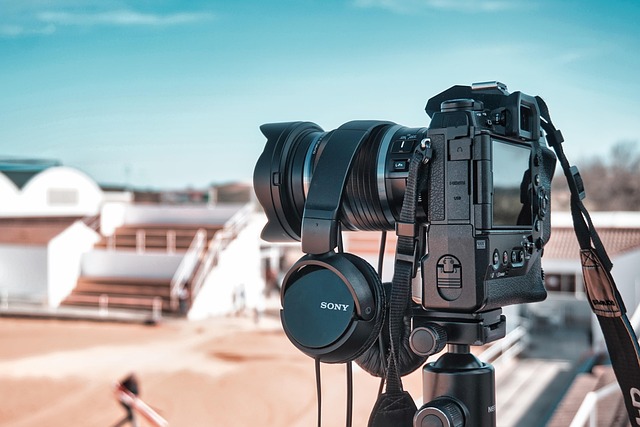Verifying video compatibility with devices and platforms is crucial for seamless playback. Update media players and drivers to support latest video formats. Address device-specific challenges like OS, browser, and hardware configurations. Optimize video settings (resolution, frame rate, bitrate) for smooth playback while maintaining quality. Ensure 1080p 30 FPS for online viewing, 4K 60 FPS for high-end productions.
Struggling with video playback issues? This comprehensive guide offers effective solutions to common problems. From ensuring your video file compatibility with your device to optimizing settings for a smooth viewing experience, we’ve got you covered. Additionally, learn how to troubleshoot specific device issues and update media players and drivers for seamless video playback. Get ready to enjoy your videos without any hiccups!
- Check Video File Compatibility
- Verify Internet Connection Speed
- Update Media Players and Drivers
- Troubleshoot Device-Specific Issues
- Optimize Video Settings for Smooth Playback
Check Video File Compatibility

When encountering video playback issues, one common troubleshooting step is to verify the compatibility of your video file. Different video formats and codecs are supported by various devices and platforms, so ensuring your video aligns with the expected standards is essential for seamless playback. Check if the video format is compatible with your device, browser, or video collaboration tools for students you intend to use.
For instance, many modern devices support popular formats like MP4, MOV, and AVI, but some older systems might require specific codecs. Additionally, when learning through online videos or sharing content via video editing tips for beginners, considering accessibility features such as closed captions and alternative audio tracks can enhance the experience for all users, especially those with hearing or visual impairments. Find us at video accessibility considerations to explore more on this front.
Verify Internet Connection Speed

A common issue when trying to stream or watch videos online is buffering and poor playback quality. The first step to troubleshooting this problem is to verify your internet connection speed. A slow or unstable connection can result in subpar video experiences, especially for high-definition (HD) content. If you’re utilizing the internet for other tasks while streaming a video, it could cause a noticeable drop in performance and lead to buffering delays.
For optimal video playback, ensure your connection speed meets the recommended requirements for the specific video. For instance, if you’re streaming a 4K video or playing a demanding video game, consider checking your bandwidth capacity. Learning through online videos, whether they be educational tutorials or entertaining content, should be seamless without constant interruptions. Similarly, when it comes to science communication through videos, clear and uninterrupted playback is essential for effective knowledge transfer. Visit us at beginner’s guide to video editing software anytime to enhance your multimedia experiences beyond what slow connections permit.
Update Media Players and Drivers

Keeping your media players and drivers up to date is often overlooked but can significantly impact your video playback experience. Outdated software may struggle to decode newer video formats, leading to buffering issues, stuttering, or even failure to play certain files. Regularly updating these components ensures compatibility with the latest video standards.
For Windows users, this includes keeping your media player and graphics drivers current. For Mac users, ensure VLC Media Player is updated as it supports a wide range of video formats. If you’re utilizing video marketing strategies or video-based assessments and evaluations, maintaining up-to-date software is crucial for seamless delivery and playback. Give us a call at Video as an educational tool to learn more about optimizing your video-driven student engagement.
Troubleshoot Device-Specific Issues

When troubleshooting common video playback problems, it’s essential to look beyond generic solutions and address device-specific issues. Different operating systems, browser types, and hardware configurations can present unique challenges. For instance, a video that plays smoothly on your computer might stutter or freeze on a friend’s device due to variations in CPU speed, RAM availability, or graphics card capabilities. Start by confirming the video format compatibility with your device; not all codecs are supported across platforms. Check for software updates and ensure antivirus programs aren’t accidentally blocking access to necessary files.
If you’re involved in video-based emotional intelligence training, video production techniques, or video project management strategies, understanding these nuances is crucial. Even seasoned professionals can encounter problems when sharing videos with audiences using different devices. To solve these issues, consult device-specific forums and communities for troubleshooting tips tailored to specific operating systems or browsers. As a starting point, consider checking hardware specifications and updating drivers. For instance, if you’re having trouble playing videos on your smartphone, ensure the screen resolution is compatible with the video’s settings. Explore the vast resources available online, including beginner’s guides to video editing software, for detailed solutions that cater to diverse devices and needs.
Optimize Video Settings for Smooth Playback

To ensure smooth video playback, optimizing your video settings is a crucial first step. Adjusting resolution, frame rate, and bitrate can significantly impact performance, especially for longer videos or those with high-quality visuals. Lowering resolution and frame rate can reduce file size without noticeably affecting viewer experience, making streaming and downloads faster and more efficient.
When dealing with video-based emotional intelligence training or crafting engaging video production techniques for social media content, consider these settings. For instance, 1080p at 30 frames per second (FPS) is a good balance for online viewing, while 4K resolution at 60 FPS is ideal for high-end video production. If you’re producing content for remote teams, visit us at video production for remote teams anytime to leverage these settings and ensure your videos play back seamlessly across different devices and internet speeds.
To ensure seamless video playback, follow these comprehensive steps. From checking file compatibility and verifying internet speed, to updating media players and troubleshooting device issues, each section offers practical solutions. Optimizing video settings is also crucial for a smooth experience. By addressing these common problems, you can enjoy your videos without interruption, ensuring the best possible viewing experience.








Leave a Reply